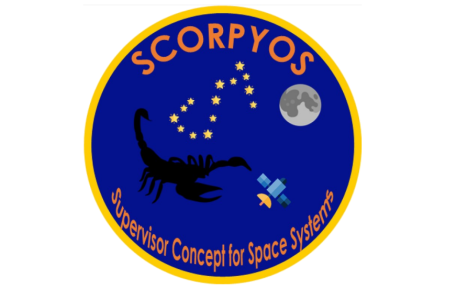SCORPYOS –Supervisor COncept foR sPace sYstemS - Minimalistic Supervisor based on ATMegaS128

The widespread use of COTS in LEO is constrained by their susceptibility to faults and the difficulty in implementing custom fault detection and recovery actions (FDIR) closely to the system in question. Thus, faults may pass undetected until they propagate outside the COTS system and cause a significant impact on the spacecraft. This delay in recovery actions may contribute to lower in-orbit reliability and availability. The challenge is in supporting designers who wish to protect their systems via recurrent methods and tools which are also cost-effective.
EVOLEO proposes to develop and demonstrate an elegant breadboard of a reference design for a "Minimalistic Supervisor", including HW and a set of SW/FW tools to easily configure/parametrize the operation of the inputs/outputs and internal functions without the need for specific coding. The SCORPYOS project targets the development of a Supervisor Concept for Space Systems, operating alone or as a supporting unit, focusing on small subsystems, high simplicity of usage and LEO missions.
The ultimate goal of the implementation of the SCORPYOS concept was to significantly increase the availability of the COTS system under supervision via a reference design HW and a set of SW/FW tools that allow a user to easily configure/parametrize the reference design to its use-case.
Therefore, there are three basic key goals to be accomplished within this activity that drive the entire thinking of the project:
-
To design and implement an elegant breadboard (EBB) reference design, HW and SW/FW tools, for a minimalistic supervisor to support COTSbased subsystems capable of fulfilling a large spectrum of the market/use cases needs in terms:
a. Technical performance and capabilities (FDIR functions, dependability, flexibility of use)
b. Commercial soundness (cost/time to market/recurrence)
- To validate via testing the applicability of the reference design to, at least, two actual use case scenarios via streamline (re)configuration and parametrization of the reference design to the use-case scenario.
-
To layout in collaboration with industry partners future steps for adoption of the developed technology. These objectives are to consider the application of the technology development to a:
- Closer to production, flexible and recurrent oriented reference designs for minimalist supervisor for COTS-based subsystems.
- Small to minisatellite classes (+20kg) in LEO for New Space using COTS.
- Small subsystems which require improvements in availability and overall reliability.
